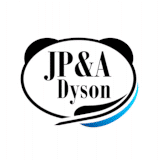Copyright Protection
If you're a writer, the issue of copyright will be an important one to you. This section offers some background information on copyright and protecting your work from copyright infringement, covering the following topics:
- What is copyright?
- Copyright law and its history
- Registering your work for copyright protection
- Proper use of the copyright symbol
- Countries covered by copyright
What is copyright?
Copyright is a form of intellectual property (often referred to as "IP"). Other forms of intellectual property include trade marks, designs, and patents. These categories refer to different kinds of ideas which may not exist in a physical form that can be owned as property in the traditional sense, but may nonetheless have value to the people who created them. These forms of intellectual property can be owned in the same way that physical property is owned, but – as with physical property – they can be subject to dispute and proper documentation is required to prove ownership.
The different types of intellectual property divide into these categories as follows:
- Copyright: copyright protects creative output such as books, poems, pictures, drawings, music, films, etc. Any work which can be recorded in some way can be protected by copyright, as long as it is original and of sufficient length. Copyright does not cover short phrases or names.
- Trade marks: trade marks cover words and/or images which distinguish the goods or services of one trader from another. Unlike copyright, trade marks can cover names and short phrases.
- Designs: designs cover the overall visual appearance of a product, such as its shape, etc.
- Patents: patents protect the technical or functional aspects of designs or inventions.
The specifics of the legal protection surrounding these various forms of intellectual property will vary from nation to nation, but there are also generally international conventions to which a lot if not most of the nations of the world subscribe. The information provided below outlines the common situation in many countries but you should be aware that this may not reflect the exact situation in every territory.
The two types of intellectual property most relevant to writers are copyright and trade marks. If a writer has written a novel, a short story, a poem, a script, or any other piece of writing then the contents themselves can be protected by copyright. The title, however, cannot be protected by copyright as it is a name. An author may therefore feel that they wish to consider protecting the title of their work by registering it as a trade mark, if they feel that it is particularly important and/or more valuable in itself than the cost of registering a trade mark.
If a writer wants to register the copyright for their work, or register the title of their work as a trade mark, there are generally registration fees to be paid. Despite the fact that copyright covers long works that could be hundreds of thousands of words long, while trade marks cover single words and short phrases, the cost for registering a trade mark is likely to be many times higher than that for registering a work for copyright protection. This is because trade marks must be unique and are checked against existing trade marks for potential conflicts. While works to be registered for copyright must also not infringe existing works, it is not practical to check the huge volume of new works to be registered for copyright against the even larger volume of all previously copyrighted works. Copyright registration therefore tends to simply archive the work in question as proof of the date at which the person registering the work was in possession of it.
In the case of both copyright and trade marks the law generally provides some protection even without any kind of registration, but registration provides the owner of the intellectual property with greater and more enforceable protection. In the case of copyright, the creator of a work usually automatically owns the copyright as soon as the work is recorded in some way (i.e. by writing it down or recording it electronically, etc.), however these rights can be difficult to prove if disputed, and therefore many countries (such as the United States) also offer an internal country-specific means of registering works. Some countries, like the United Kingdom, do not offer any such means of registration, however an international registration is available through the Intellectual Property Rights Office's Copyright Registration Service, and can be used regardless of any country-specific provisions. This can help protect copyright in all of the nations which are signatories of the Berne Convention (click here for a full list).
In the case of trade marks, the symbol "™" can be applied to any mark which is being used as a trade mark, however greater protection is provided if this mark is registered, in which case the symbol "®" can be applied to the mark. It is often illegal to apply the "®" symbol to a trade mark which has not been registered. There are also options for international registrations of trade marks, which are administered by the World Intellectual Property Organization, however applications cannot be made to the WIPO directly – applications must be made through the relevant office of the applicant's country.
Disclaimer
While every effort is made to ensure that the information on this site is correct and accurate, please remember that it refers to general principals rather than specific laws of specific countries, and you should not rely on it for legal purposes. Always check with a qualified lawyer to confirm the situation in your own country.





